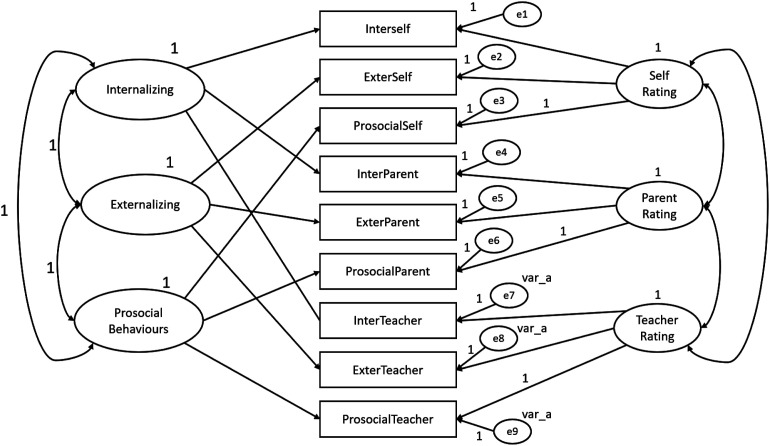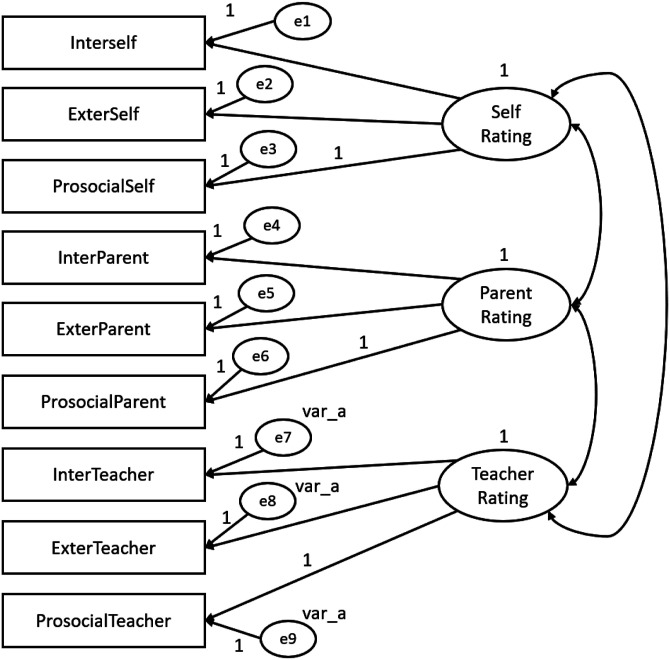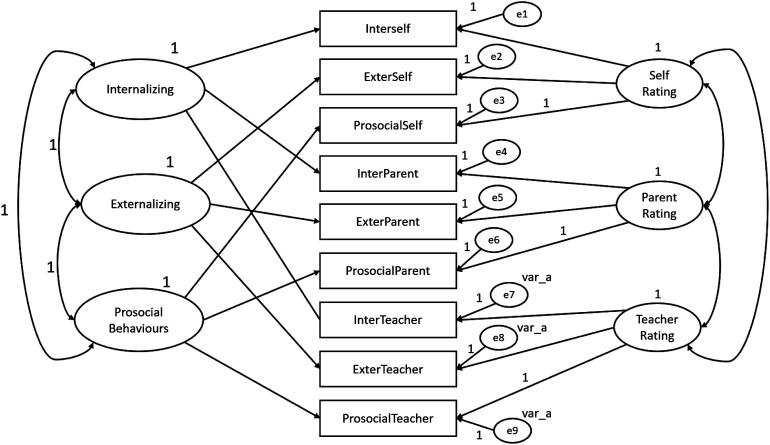构建三个维度和五个维度的优势和困难问卷的相关有效性:多特征多方法分析。
IF 2
4区 医学
Q3 PSYCHIATRY
Clinical Child Psychology and Psychiatry
Pub Date : 2023-10-01
Epub Date: 2023-04-05
DOI:10.1177/13591045231168703
引用次数: 0
摘要
优势和困难问卷(SDQ)是评估儿童心理适应最广泛使用的问卷之一,但其内部结构一直是争议的目标。最近的研究表明SDQ是一种三因素结构,但数据仍然很少。本研究采用多特质多方法分析儿童、父母和教师提供的三个维度和五个维度的SDQ结构相关有效性。共从葡萄牙社区样本中招募了415名参与者。两个SDQ版本都表现出良好的收敛相关有效性,五个版本的值更高。这项研究的结果表明,在社区低风险样本中,具有三个维度的SDQ可能更适合作为儿童心理适应的筛查指标。尽管如此,SDQ仍需要进一步的心理测量学改进,以便从多源样本中正确收集有关儿童心理调整流行率的信息。本文章由计算机程序翻译,如有差异,请以英文原文为准。



Construct-related validity of the strengths and difficulties questionnaires with three and five dimensions: A multitrait-multimethod analysis.
The Strengths and Difficulties Questionnaire (SDQ) is one of the most broadly used questionnaires to evaluate children’s psychological adjustment, however its internal structure has been a target of ongoing controversy. Recent studies suggested a three-factor structure of the SDQ, however data is still scarce. The present study used the Multitrait-Multimethod analysis to examine SDQ construct related-validity with three and five dimensions, provided by children, their parents and teachers. A total of 415 participants were recruited from a Portuguese community sample. Both SDQ versions presented good convergence-related validity, with higher values for the five version. Findings from this study suggest that the SDQ with three dimensions could be more suitable as a screening measure of children’s psychological adjustment in a community low-risk sample. Nevertheless, the SDQ still needs further psychometric improvements in order to properly collect information from multi-source samples about the prevalence of children’s psychological adjustment.
求助全文
通过发布文献求助,成功后即可免费获取论文全文。
去求助
来源期刊

Clinical Child Psychology and Psychiatry
PSYCHIATRY-PSYCHOLOGY
CiteScore
3.60
自引率
5.60%
发文量
130
期刊介绍:
Clinical Child Psychology and Psychiatry brings together clinically oriented, peer reviewed work of the highest distinction from an international and multidisciplinary perspective, offering comprehensive coverage of clinical and treatment issues across the range of treatment modalities.
Clinical Child Psychology and Psychiatry is interested in advancing theory, practice and clinical research in the realm of child and adolescent psychology and psychiatry and related disciplines.
The journal directs its attention to matters of clinical practice, including related topics such as the ethics of treatment and the integration of research into practice.
Multidisciplinary in approach, the journal includes work by, and is of interest to, child psychologists, psychiatrists and psychotherapists, nurses, social workers and all other professionals in the fields of child and adolescent psychology and psychiatry.
 求助内容:
求助内容: 应助结果提醒方式:
应助结果提醒方式:


